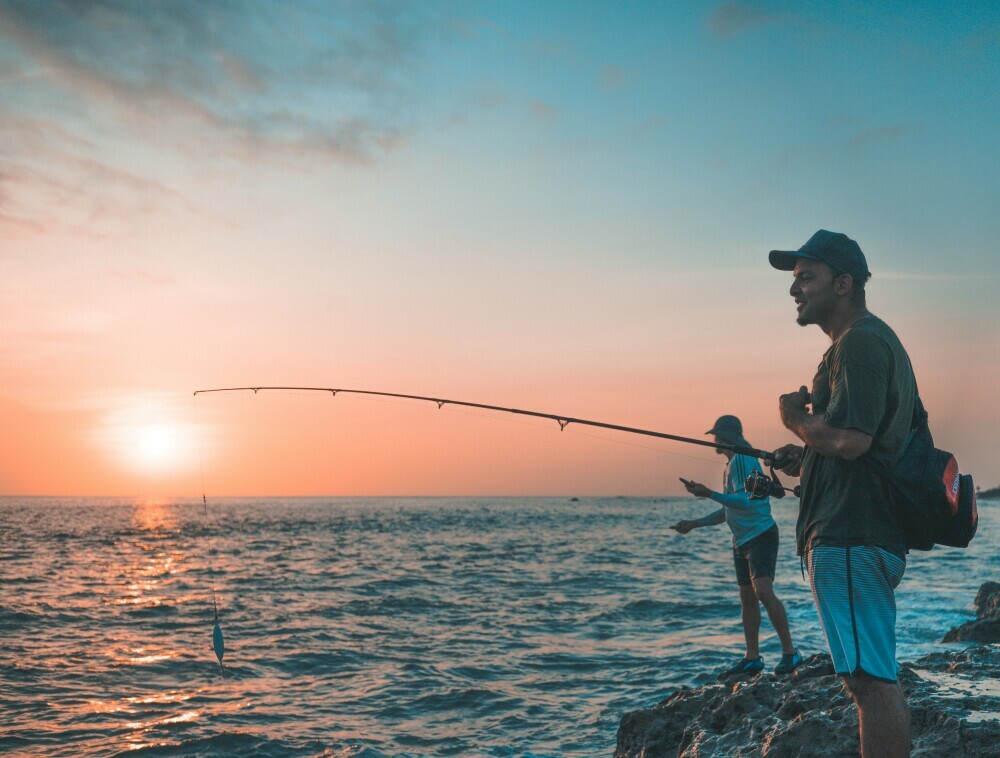I’m going to kick things off by unpacking the technique of bottom bouncing, a method that’s gained a solid reputation among fishermen. This isn’t just about dragging a weight along the river bed; it’s also about precision, finesse, and understanding the whims of the fish you’re after.
You might be asking yourself, what makes bottom bouncing so effective? I’ll tell you right now: it’s about offering bait in the most natural presentation possible, mimicking the easy pickings that fish can’t resist. Regardless of your target species, bottom bouncing can be a game changer.
Let’s talk gear for a second. You’re going to need more than just a standard fishing rig. Bottom bouncing calls for specific tools designed to withstand the challenges of fishing deep, keeping your bait in the strike zone, and negotiating rocky or snag-prone areas. Wondering what those are? That’s exactly what you’re going to find out about in the next section.
Essentials of Bottom Bouncing Gear
If you want to become adept at bottom bouncing, you need to start with the right toolkit. The rod and reel you choose can make a significant difference. For bottom bouncing, a medium-heavy rod with a sensitive tip is ideal because it allows you to feel the contact between the weight and the bottom, which is crucial. Pair that with a reliable reel that has a smooth drag system; this helps a lot when you’re fighting a fish that’s decided to strike.
Now, let’s talk weights. The key is to use enough weight to maintain contact with the bottom but not so much that you can’t detect when a fish bites. Pencil weights, Lindy’s No Snag Slip Sinkers, and walking sinkers are common choices, each offering unique advantages depending on current and depth. Learning how to select and utilize these weights is going to include understanding the specifics of your fishing environment.
Your line and leader are also important. I recommend a braided line for its sensitivity and lack of stretch. This gives a clear indication of what’s happening underwater. For leaders, fluorocarbon is often chosen due to its low visibility and abrasion resistance, which is great when you’re dealing with structures that can fray your line.
Choose something that resonates with you but keep in mind that the equipment should be suitable for the type of fish you’re targeting and the conditions you’ll be facing. After all, the challenge is part of the fun. Even if your first attempt doesn’t result in a catch, you can always adjust your approach down the road.
Techniques and Strategies for Bottom Bounce Mastery
You’re about to step into a game-changing strategy used by savvy anglers for nailing that trophy catch. Bottom bouncing isn’t just chucking a weight into the water; it’s about fine-tuning your approach and mastering certain techniques.
Controlling boat speed is crucial. It’s about finding that sweet spot where your lure dances enticingly just above the bottom, without snagging. Trolling motors are your best friend here, allowing for precise adjustments.
But you don’t need a boat to use this technique. Many successful outings have produced fish from the river bank. Using a baitcaster reel or opening the bail on your spinning reel will allow your bait to bounce along with the current.
Understanding the underwater terrain is vital. You can’t see beneath the surface, but with practice, you can learn to interpret the feedback from your rod. A smooth drag usually means mud or sand, while a more erratic feel signals rocks or structure.
Different fish call for different bounce techniques. A walleye might require a slow and steady drag, whereas bass often responds to a more erratic, ‘hopping’ retrieve.
Remember, the water doesn’t stay the same, and neither should your technique. When faced with water currents or windy conditions, adjust your weight and retrieval speed to maintain the right presentation of the bait.
Advanced Tips for Enhancing Bottom Bouncing Skill
Now, if you want to take your bottom bouncing to the next level, refining your technique and using the right gear are your fast tracks to success. Let’s touch on a few crucial tips that might just give you the edge in your next fishing adventure.
Let’s discuss rigging first. It’s not just about threading a worm onto a hook; it’s about understanding the subtleties. For instance, if you’re aiming for walleye, try using a shorter leader in murky water to keep your bait closer to your weight. This can make your offering more noticeable to these sight-feeding predators.
Don’t underestimate the power of a well-placed cast. Especially when shore fishing, your ability to read the water and place your bait exactly where the fish are hiding is critical. It could mean the difference between a good day and a great day out on the water.
In my opinion, electronics can be a game-changer for bottom bouncing from a boat. Fish finders and GPS not only help you locate fish but also help you understand the bottom composition. Knowing whether you’re bouncing over sand, rock, or weed can drastically change your approach.
I’m going to tell you something about the importance of being adaptable. Weather, water temperature, and seasonal behaviors of fish can alter the effectiveness of your techniques. Keep a journal of your outings, noting what works and what doesn’t under different conditions. This insight is invaluable and builds your personal fishing ‘database’.
Remember, your first attempt with new tactics doesn’t need to be perfect. It’s about the learning curve and finding what resonates with you and the fish you’re targeting.
Conservation and Ethical Practices in Bottom Bouncing
I’m here to help you become not just a skilled angler but a responsible one as well. With bottom bouncing, the focus isn’t solely on landing the biggest fish; it’s about respecting the ecosystem and ensuring it thrives for generations to come.
Catch and release is more than a method; it’s a commitment to fish health. It’s essential to handle fish with care, use barbless hooks when possible, and keep them in the water as much as you can during the release process.
Beyond the individual, there’s the habitat to consider. We’re visitors in the waterways where we fish, so it’s on us to protect them. That means being mindful of the environment, avoiding areas with fragile spawning grounds, and always, always picking up your trash.
Finally, community involvement can have a huge impact. Whether you’re mentoring a new angler or participating in local conservation efforts, your positive actions contribute to a culture of responsible fishing. By working together, we can ensure bottom bouncing remains a sustainable practice for all who enjoy it.
Final Thoughts
So whether you are just learning this technique or are a seasoned veteran, you can have a success and fun bottom bouncing. You become a technician of this art when you are trying to figure out the right retrieval speed and weight to use.
Take the time to read the conditions you are fishing in. Understand what the different species like and how they react to changes in water temperature, light and water clarity. Navigate the river bed or lake bottom to know what type and how heavy of weight you need.
Once you understand the conditions you can start experimenting with the right amount of leader to use and just letting your line bounce its way in front of your next catch.
Have fun, tight lines and drop us a comment with your success or fish stories. We would love to hear form you and post some of your personal stories with pictures if you wish.

